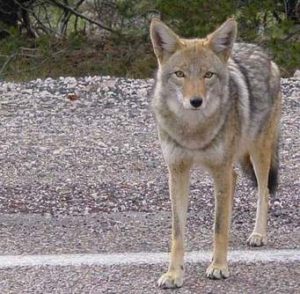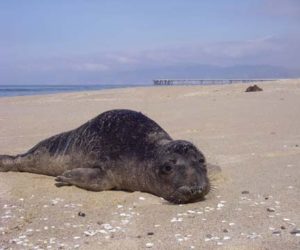 Wildlife experts commend the city of Los Angeles’ No-kill policies, stating such policies are rare among animal-control agencies in the United States. No-Kill policies typically apply only to dogs and cats. But LA Animal Services is applying its “reverence for life – No-Kill” philosophy to all animals: companion pets, wildlife, farm animals, and exotics. All of which LA Animal Services rescues in large numbers every year.
Wildlife experts commend the city of Los Angeles’ No-kill policies, stating such policies are rare among animal-control agencies in the United States. No-Kill policies typically apply only to dogs and cats. But LA Animal Services is applying its “reverence for life – No-Kill” philosophy to all animals: companion pets, wildlife, farm animals, and exotics. All of which LA Animal Services rescues in large numbers every year.
“Los Angeles is typically one of the more progressive agencies,” said John Hadidian, director of the Humane Society’s urban wildlife program. “I consider… [No-Kill for Wildlife] a welcome sign that others might follow soon.”
Today, the LA Times ran an op-ed piece to explain our wildlife policy, especially as it relates to coyotes:http://www.latimes.com/news/opinion/commentary/la-oe-boks25jan25,0,786755.story?coll=la-news-comment-opinions
Wile E. neighbors
Killing off coyotes and other L.A. fauna could actually make life worse for humans.
By Ed Boks, ED BOKS is the general manager of Los Angeles Animal Services
January 25, 2007
HUMANS NEARLY exterminated the wolf in the last century, but coyotes have proved to be real survivors. They’re now the principal wild canine in California, despite man’s best efforts — trapping, shooting, poisoning — for 150 years. Harried, dislocated and hunted, coyotes nonetheless flourish. And now, like a couple of L.A. hipsters, a pair of urban coyotes have started prowling the neighborhoods around trendy Melrose Avenue, 3rd Street and the Grove.
The locals are alarmed, dialing up animal control and their city councilman to report the sightings and ask, worriedly, are these animals a threat? Can’t something be done to move them?
In many parts of the city, a coyote sighting doesn’t rate a turned head, let alone a call to the City Council. But they aren’t typically spotted in this densely developed part of town. So how’d they get there? One theory is that a good samaritan found them injured and nursed them back to health before they escaped. Another is that they came in unaware in the back of a truck. It is also possible that they simply walked there looking for water. After all, under all this concrete, L.A. is still a desert that many forms of wildlife call home. Clever coyotes might be able to walk the mile or two from the Hollywood Hills, crossing the boulevards under the cover of darkness.
Some people, who believe we can isolate ourselves from our wild surroundings, find such wildlife a nuisance that should be removed. But it’s not that easy. California regulations say a trapped coyote must be either euthanized or immediately released on site. Remarkably, the rules allow sick or injured coyotes to be taken for rehabilitation, but healthy ones must be killed if not released then and there.
Given the unusual circumstances of our midtown coyotes, Los Angeles Animal Services has asked the California Department of Fish and Game for a special dispensation to allow us to attempt to trap this pair and release them back into the wild.
Animal Services has a unique no-kill policy toward wildlife, including coyotes, and for good reason. Killing coyotes has the unintended consequence of producing more coyotes, not fewer. Mother Nature provided them with a powerful survival mechanism: Smaller social group size increases the food-per-coyote ratio, and this food surplus biologically triggers larger litters and higher litter survival rates.
Even if we wanted to trap or kill all the coyotes in a designated area, history shows the vacancy won’t last. Coyotes, like the rest of nature, abhor a vacuum. Larger litters rebuild the population and, with no rivals to keep them at bay, coyotes from the surrounding areas move right in. The end result of these futile eradication efforts is always the same: The area is quickly overrun with new, and often more, coyotes.
Coyotes — once largely confined to the northwestern corner of the continental U.S. — can now be found in L.A.’s Griffith Park and New York’s Central Park, in snowy Alaska and sultry Florida. Threatened by human expansion, they find new homes wherever it is convenient.
Because our expanding cities keep eating up habitat, we’re destined to live with the urban (or suburban) coyote. But that shouldn’t be too much trouble. Coyotes are afraid of humans and almost never attack them. The most reliable estimates assert that there have been fewer than 300 recorded coyote attacks that resulted in human injuries, most involving small children. There are about 3 million children bitten by dogs every year, so a child is considerably more likely to be hurt by the family pet.
That family pet might also lure coyotes — either as prey or as a mate. Unspayed female dogs in heat will attract male coyotes, and likewise unneutered male dogs can be lured by the scent of a female coyote. There have been cases of such a lothario being killed by males in the coyote pack. Fixing your dog fixes this part of the problem. But small dogs and cats are particularly vulnerable to attacks by hungry coyotes and should be kept indoors whenever feasible.
Coyotes are smart, fast and agile — they can sprint up to 40 mph and have been known to scale chain-link fences. They will take what they can get — pet food, garbage, even fruit that’s fallen off trees — day or night.
If you don’t like your local coyotes, remember this: An area with coyotes is never overrun with rodents — a lesson learned by Klamath County, Ore., in 1947. After attempting to eradicate their coyote population, they soon found themselves infested by rodents, experiencing the poetic truth that you don’t know what you’ve got till it’s gone.
 Marine mammals stranded on beaches are expected to increase over the next 3 to 4 months. One sensitive location for migratory sea birds and marine mammal strandings is the North Channel area in Venice/Marina Del Rey.
Marine mammals stranded on beaches are expected to increase over the next 3 to 4 months. One sensitive location for migratory sea birds and marine mammal strandings is the North Channel area in Venice/Marina Del Rey.
